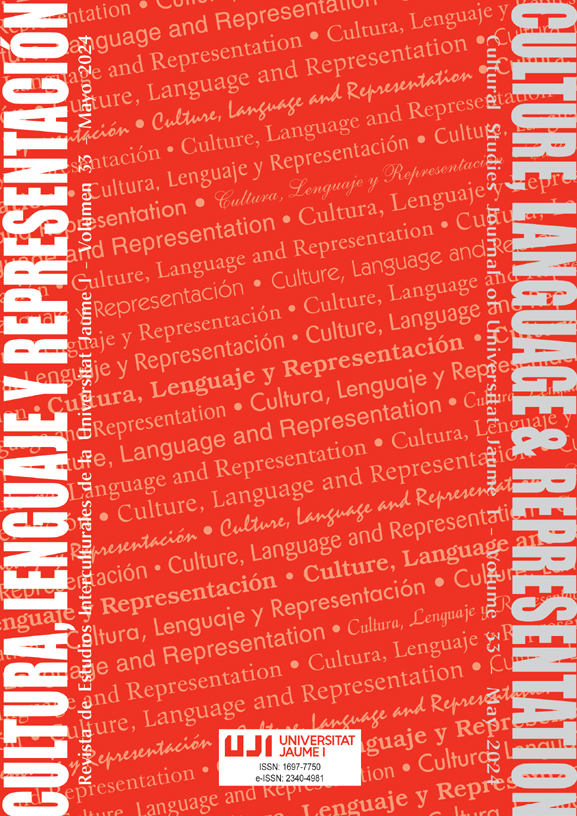Non-sexist language strategies in election manifestos (2023)
Main Article Content
Abstract
This paper deals with the use of non-sexist strategies in manifestos of the Spanish general election of July 2023. The analysis of the strategies as compared with the use of generic masculine aims to determine how they correlate with political ideology and to what extent they contribute to manifesting ideological polarization. We analyze the programs of three left-wing parties (Sumar, PSOE, ERC) and three right-wing parties (PP, Vox, Junts), two of which are from the Catalan area (ERC, Junts). We compare the results with previous analyses of parliamentary debate. The quantitative and qualitative analysis of the manifestos shows that the use of non-sexist language has consolidated as an emblem of left-wing ideology, which produces an increase in the frequency of use of non-sexist strategies and a decrease of generic masculine. Among the mechanisms of non-sexist language, doublings are losing ground and collectives, generics and epicenes are increasing, often used in a non-natural or even grammatically incorrect way.
Downloads
Article Details
An open-access CREATIVE COMMONS copyright license is used. Those authors whose works are published by this journal, accept the following terms:
- Authors will retain their copyright and guarantee the Journal the right to first publish their work, which will simultaneously be subject to the Creative Commons Recognition License CC BY SA that allows third parties to share the work, provided that its author and first publication is indicated.
- Authors may adopt other non-exclusive license agreements for the distribution of the published version of the work (e.g., deposit it in an institutional telematics file or publish it in a monographic volume) provided that the initial publication in this journal is indicated.
- Authors are allowed and recommended to disseminate their work over the Internet (e.g. in institutional telematics files or on their website) before and during the submission process, which can produce interesting exchanges and increase quotes of the published work.
Funding data
-
Ministerio de Ciencia e Innovación
Grant numbers PID2020-119102RB-I00
References
Briz, Antonio et al. (2011). Guía de comunicación no sexista. Instituto Cervantes / Aguilar.
Cuenca, M. Josep (2020). El lenguaje no sexista: más allá del debate. Discurso y sociedad, 14(2): 227–263.
Cuenca, M. Josep, Albelda, Marta i Mercedes Quilis (2011). Guia d’ús per a un llenguatge igualitari valencià. Universitat de València / Tecnolingüística, S.L. http://www.uv.es/igualtat/GUIA/GUIA_VAL
Fuentes Rodríguez, Catalina (2013). Argumentación, (des)cortesía y género en el discurso parlamentario. Tonos digital, 25. http://www.tonosdigital.es/ojs/index.php/tonos/article/view/984/632
Guerrero Salazar, Susana (2020). El debate social en torno al lenguaje no sexista en la lengua española. IgualdadES, 2: 201–221. https://doi.org/10.18042/cepc/IgdES.2.07
Junyent, Carme (Ed.) (2021). Som dones, som lingüistes, som moltes i diem prou. Eumo .
López Serena, Araceli (2011). Usos lingüísticos sexistas y medios de comunicación. En torno al denostado masculino genérico. En Rosalba Mancinas Chávez (Coord.), La mujer en el espejo mediático: II (pp. 92–112). Asociación Universitaria Comunicación y Cultura.
Martínez Linares, Mª Antonia (2022). Sobre los dobletes de género y cuestiones gramaticales conexas. Círculo de lingüística aplicada a la comunicación, 89: 71–88.
Moreno Benítez, Damián (2012). ‘Los alcaldes y alcaldesas’: referencia a personas y género en el lenguaje parlamentario andaluz. Discurso i Sociedad, 6(1): 216–233.
Porto Requejo, Mª Dolores (2023). Polarización en periódicos españoles: significado y contextos de uso. Cultura, Lenguaje y Representación, XXX: 223–242.
Quilis, Mercedes; Albelda, Marta i Cuenca, M. Josep (2011). Guía de uso para un lenguaje igualitario. español. València: Universitat de València/Tecnolingüística, S.L. http://www.uv.es/igualtat/GUIA/GUIA_CAS
RAE/Bosque, Ignacio (2012). Sexismo lingüístico y visibilidad de la mujer. http://www.rae.es/sites/default/files/Sexismo_linguistico_y_visibilidad_de_la_mujer_0.pdf.
RAE (2022). Informe de la Real Academia Española sobre el lenguaje inclusivo y cuestiones conexas. https://www.rae.es/sites/default/files/Informe_lenguaje_inclusivo.pdf
Van Dijk, Teun A. (2006). Discourse, context and cognition. Discourse Studies, 8(1): 159–177.
Vellón Lahoz, Javier i Saura Manzanares, Alba (2023). ‘Empresarios/ trabajadores y trabajadoras’. El lenguaje inclusivo en el debate político: estrategias lingüísticas e ideológicas. Oralia 26 (1): 179–204.


